By Eric Niderost
At the start of the Battle of Amiens, Sergeant Paul Maze was in a forward observation post not a thousand yards from the front, peering into the darkness for any signs of enemy activity. General Sir Henry Rawlinson’s British Fourth Army was about to launch a major offensive against the Germans, and the element of surprise was crucial if Allied plans were to succeed. Dark shapes were silhouetted against the gloom, their rhythmic movements marking them as foot-slogging infantry. Maze dismissed these spectral forms, knowing them to be Fourth Army troops going into line.
Tendrils of ground mist arose, each gossamer strand weaving together to form a cottony layer a foot deep. These mists grew even thicker, reducing visibility to near zero, yet there was something almost mesmerizing about this literal “fog of war.” Maze gazed at the dense, white mass, but his reverie was broken by the plaintive buzz of a field telephone. General Rawlinson was on the line, asking if there was any enemy activity. “All quiet,” Maze replied, but after he hung up the receiver involuntary shivers coursed up and down his body from cold and excitement. It was August 8, 1918, and the attack would begin at precisely 4:20 am.
In another part of the field, tank driver A.C. Bacon decided it was time to get out of his machine for a stretch. Bacon relished the last precious minutes of freedom, inhaling the crisp, chill air that was so different from the oil-laced stench of a tank interior. It was almost zero hour, so Bacon half-reluctantly got back into his cramped driver’s seat, then made sure his Webley revolver was loaded and his gas mask was close at hand.
Bacon was driving a Mark V tank, a 28-ton metal monster designed to pulverize the enemy’s front line and achieve a breakthrough by sheer brute force. The tank had been an object of controversy since its inception, and even its most faithful advocates admitted this fledgling weapon was not without flaws. Tanks had teething problems, but they still showed great promise. Maybe they would come into their own at Amiens. Driver Bacon hoped so. (Read more about the wars that shaped modern history inside Military Heritage magazine.)
”A Colony of Giants Slamming Iron Doors”
At 4:20 the silence of a predawn French morning was rudely shattered by the collective roar of two thousand British guns. All hell broke loose, the thundering reports lighting up the horizon as a hurricane of shells poured down on German lines. Artillery fire merged to create an almost indescribable din; one observer likened it to “a colony of giants slamming iron doors as fast as they could go.” But many other offensives had opened with spectacular bombardments, only to end in bloody failure. Would this battle be any different?
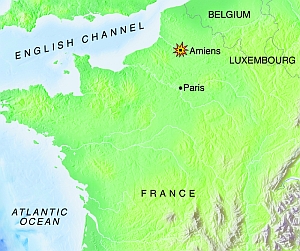 Amiens was the first major Allied offensive of mid-1918, a cooperative effort that involved British, Canadian, Australian, and French troops. There was even a small American contingent in support of the British Third Division. The attack was to be spearheaded by the Canadians and Australians, with the British and French guarding their flanks with secondary assaults. The battle was the first major attempt by the Allies to regain the initiative they lost earlier that year.
Amiens was the first major Allied offensive of mid-1918, a cooperative effort that involved British, Canadian, Australian, and French troops. There was even a small American contingent in support of the British Third Division. The attack was to be spearheaded by the Canadians and Australians, with the British and French guarding their flanks with secondary assaults. The battle was the first major attempt by the Allies to regain the initiative they lost earlier that year.
Nineteen eighteen was a year of crisis for the Allied cause. Russia was in turmoil, bled white by war and wracked by Communist revolution. On March 3 the new Bolshevik government signed the Treaty of Brest-Litovsk, a pact that acknowledged Germany’s complete victory on the Eastern Front. Now large numbers of German troops could be transferred to the Western Front in France.
The treaty ink was hardly dry before the Germans launched a series of offensives on the Western Front. The German spring offensive began on March 21, the first in a series of make-or-break attempts to win the war before American manpower and materiel could be brought to bear. At first the Germans achieved spectacular success, smashing through Allied lines and taking large numbers of prisoners. Anglo-French gains of 1917-18, won at the cost of so much blood and treasure, were wiped out.
Worse was to follow. The German advances continued, the Allies reeling from a series of well-directed sledgehammer blows. On May 31, 1918 the Germans were on the Marne River, only 50 miles from Paris. General Erich von Ludendorff, member of the Oberste Heeresleitung (Supreme Army Command) and virtual dictator of Germany, hoped to separate British and French armies as a first step to their ultimate destruction. The Allied line would be rolled up, and the British Army smashed against the Channel coast. Paris, the ultimate goal that eluded them for four years, seemed to be well within the German grasp.
The Infamous ‘Amiens Gun’
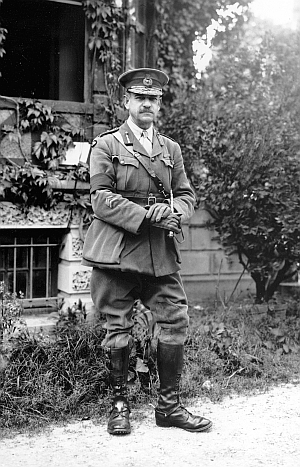 The Allied forces, though hard pressed, managed to hang on, and their retreat did not turn into a rout. They fought back, most notably a brilliant stand by the American 3rd Division at Chateau-Thierry. The German drive slowed, then stalled outright. Ludendorff partly withdrew his troops, but by August 1918 the Germans still held more territory than they had in March. This was certainly true in the Amiens area, where the enemy was much closer to this French city than they had been months earlier.
The Allied forces, though hard pressed, managed to hang on, and their retreat did not turn into a rout. They fought back, most notably a brilliant stand by the American 3rd Division at Chateau-Thierry. The German drive slowed, then stalled outright. Ludendorff partly withdrew his troops, but by August 1918 the Germans still held more territory than they had in March. This was certainly true in the Amiens area, where the enemy was much closer to this French city than they had been months earlier.
The city’s former outer defense line was in German hands, and uncomfortably close to the strategic Amiens-Paris railway line. Amiens was shelled by German artillery, most notably the infamous “Amiens gun,” an 11.15-inch-caliber monster mounted on a railway carriage.
Marshal Ferdinand Foch, recently appointed commander-in-chief of all Allied armies, was eager to mount a major offensive against the Germans. But where was the blow going to fall? Foch was a tough and seasoned campaigner, and he anticipated that the war would drag well into 1919. Still, he was not a man to let the enemy continue to hold the initiative. Foch wrote Field Marshal Sir Douglas Haig, commander-in-chief of the British armies fighting in France, suggesting a British offensive in the vicinity of the Bassee canal.
Haig was receptive, but had an understandable aversion to the wet, boggy regions of northern France. A whole generation of Britons had been sacrificed at Ypres and Passchendaele and Haig didn’t want to repeat the experience. No, he wrote Foch, he “saw no advantage in an advance over the flat and marshy region. …” The marshal did offer a counterproposal, inspired by the recent actions of the British Fourth Army at Hamel. Hamel had been a relatively small affair, but its successful use of tanks and infantry pointed the way to larger operations.
Heartened by this local success, Fourth Army commander General Sir Henry Rawlinson proposed a similar attack, though on a much grander scale. The general was “preaching to the converted,” because his July 4 success at Hamel provided Haig with just the inspiration he needed. Instead of the boggy northern regions of France, Haig wrote Foch that Amiens was a much better candidate for an Allied drive. An Anglo-French attack there would disengage the city and its vital rail line, winning back ground that had been lost some months earlier.
Foch concurred with Haig’s proposal, and Rawlinson was ordered to draw up a plan of attack in due course. Marshal Foch gave the final approval for the Amiens attack on July 23, and on the 24th Foch and Haig met with French General Henri Petain and American General John J. Pershing to keep them abreast of events. Amiens was designed as a largely British show, though the French First Army under General Marie Eugene Debeney was to provide important right-flank support. As Foch warmed to the idea, he arranged that the French Third Army, located just to the right of the First, would also come into the operation.
Cavalry and Tanks
The Amiens offensive seemed to take on a life of its own, expanding in scope until it bore only superficial resemblance to the original, more modest proposal. Marshal Foch’s formal orders declared that “the object of the operations is to disengage Amiens and the Paris-Amiens railway, also to defeat and drive back the enemy established between the Somme and Avre [rivers].” Nine heavy tank battalions would lead the way, a total of some 324 mainly Mark V machines, followed by two light battalions and their 96 Mark A Mediums.
But the second part of Foch’s directive read that the offensive “will be pushed as far as possible in the direction of Roye.” This was a full eight miles or so beyond the original offensive limits. Three days before zero day Foch expanded the offensive even farther, ordering Rawlinson to thrust the enemy back on Ham—an incredible additional 15 miles beyond the Roye region.
The British Cavalry Corps and the Third Tank Brigade were to play a major part in the coming offensive. The traditional role of cavalry was based upon its twin virtues of speed and mobility. Once an enemy line was broken, cavalry galloped in to exploit the breakthrough, routing the enemy and allowing no chance for them to reform or retreat in good order.
Save for a few short weeks in 1914, the cavalry had been unable to perform its traditional role, and the last few years had been ones of boredom and increasing frustration. Troopers were bitter, and their spirited mounts literally champing at the bit for action. A breakthrough at Amiens seemed to offer a long-awaited opportunity for the cavalry, and excitement mounted as the day grew nearer.
It may have looked good on paper, but the union of the Cavalry Corps and the Third Tank Brigade was less than ideal. Tank corps commander General Hugh Elles thought it was sheer folly, an opinion shared by most of his men. Tanks were generally bulletproof; horses and mounted troopers were not. Horses could move much faster than even the fastest tank, the Mark A Medium “Whippet,” but if they ran into machine-gun fire, they would be forced to quickly retire to let the tanks deal with it. By the same token, tanks could operate in situations where horsed cavalry could not. Armored advances might be stalled while tanks waited for cavalry to come up.
Tank corps concerns were generally ignored or dismissed. To staff planners cavalry and tanks were ideally suited to one another. But the Whippet was a three-man armored vehicle designed to supplant, not complement, the horse, a fact ignored by headquarters. It was a relatively speedy tank for the period, and could reach about 8 mph in good conditions.
KEEP YOUR MOUTH SHUT
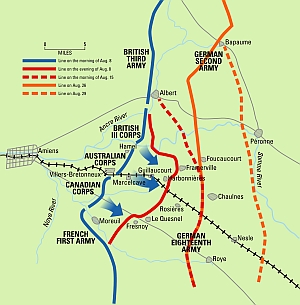 At least the brass recognized that in an operation like Amiens secrecy was paramount. The British went to extraordinary lengths to keep the Germans in the dark. Because the British Fourth Army would lead the attack, General Rawlinson ordered the saying “Keep Your Mouth Shut” to be printed up and pasted in every officer and man’s paybook. Movements of men and machines were to be accomplished under a cloak of darkness, and paved roads were sanded to reduce noise.
At least the brass recognized that in an operation like Amiens secrecy was paramount. The British went to extraordinary lengths to keep the Germans in the dark. Because the British Fourth Army would lead the attack, General Rawlinson ordered the saying “Keep Your Mouth Shut” to be printed up and pasted in every officer and man’s paybook. Movements of men and machines were to be accomplished under a cloak of darkness, and paved roads were sanded to reduce noise.
Security was so tight even leading politicians were kept ignorant of the impending attack. British Prime Minister David Lloyd George had no idea what was going on, nor did the War Cabinet in London. Lloyd George was becoming disenchanted by the way things were going at the front, and military planners wanted no civilian meddling no matter how exalted the rank.
The preparations for Amiens were a Herculean task performed with admirable efficiency and dispatch. The buildup was accomplished by the use of 290 special trains, 60 of them for ammunition, the rest for troops. Shifting troops to attack positions was a complicated job, made more difficult by the need for secrecy. In late July the Canadian Corps was still with the British First Army along the Arras Front. Lieutenant General Sir Arthur Currie, commander of the Canadian Corps, was informed of the Amiens effort on July 20, but his divisional commanders were not told until July 31.
Two Canadian infantry battalions, two casualty clearing stations, and the Corps wireless communication section were sent north to Flanders as decoys. The ruse worked; the Germans didn’t take notice when the Canadian Corps started moving into the Fourth Army sector on July 30.
The newly named Royal Air Force was going to take a conspicuous part in the operation, providing air support when and where needed. Before the offensive, audible cover was provided by huge Hadley-Page bombers, the noisy drone of their engines drowning out the sounds of tanks going into position. Allied air supremacy in the Amiens area was complete, with a total of 1,904 airplanes of all types. The Germans could barely muster 365 machines.
Gasoline is an Acquired Taste for the Tank Corps
The Tank Corps found that preparing for an offensive was an exciting task. Driver A.C. Bacon was also finding it distasteful, because each machine’s ordinary gasoline had to be replaced with aviation fuel for battle. “The only way to get the old stuff out of the tanks was by siphoning,” Bacon recalled, and to start the siphon you had to suck on a hose “for all you were worth.” The tanker added that “it always meant getting a mouthful of dirty petrol.” A meal of hot soup and bread immediately afterward restored taste buds as well as spirits.
The Amiens offensive was to open along a 13-mile front; nine-and-a-half miles of which were south of the Somme. In addition, the French First Army would operate along a seven-mile front. The advance was broken down into stages along with a strict timetable. The first objective, code-named “Green Line,” was about three-and-a-half miles from the start point. Red Line was next, about three miles farther along. Blue Line followed in succession, and if the latter was gained, a penetration of perhaps eight miles would have been achieved. Yet Blue Line was only the point of the Amiens outer defenses; as we have seen, Foch wanted to go farther still.
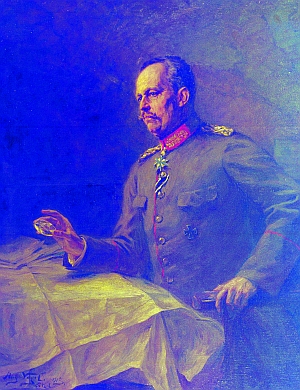 The Canadians and Australians would spearhead the attack, so they were given the lion’s share of tanks. The frontage from the Amiens-Roye road to the Villers Bretonneux-Chaulnes railway was the responsibility of the Canadian Corps. General Currie, a brilliant and much respected officer, had his Second and Third Divisions in line, and the First and Fourth Divisions in reserve.
The Canadians and Australians would spearhead the attack, so they were given the lion’s share of tanks. The frontage from the Amiens-Roye road to the Villers Bretonneux-Chaulnes railway was the responsibility of the Canadian Corps. General Currie, a brilliant and much respected officer, had his Second and Third Divisions in line, and the First and Fourth Divisions in reserve.
By contrast the Australians were on the Canadians’ left, responsible for the front running from the Villers Bretonneux-Chaulnes railway north to the Somme. Australian Corps commander Lt. Gen. Sir John Monash was a good tactician whose efforts at Hamel had provided inspiration for the current offensive. He was disliked by many in the British high command, because he was technically not a professional soldier, and also because he was Jewish. Monash had his Second, Third, and Fourth Divisions in line, the First and Fifth in reserve.
The supporting task assigned to the British Third Corps was an unenviable one. The Third had been badly bloodied during the earlier German offensives, its ranks consisting of battered veterans and green teenagers. As it was, the British Army of 1918 was undermanned, with fully half its formations filled with callow youth under 19 years of age. The British Third Corps sector was north of the Somme, an area so cut by gullies and spurs it was not ideal tank country. Because of this, and because the main thrust was to come farther south, the Third had only one tank battalion.
The Amiens blow was going to fall on the German Second Army and German Eighteenth Army. The German Second Army under General Georg von der Mauritz had 10 divisions in line, while the Eighteenth under General Oskar Hotier had 11 divisions in line. Both armies were understrength, with an average divisional count of around 3,000 effectives. German defenses around the Amiens sector were poor to average, and the elaborate ruses the Allies had employed lulled the Germans into a dangerously somnolent mood.
As previously noted, the Battle of Amiens began with a thunderous barrage. While the tank played an important role in the latter part of 1918, the artillery’s contribution is sometimes overlooked. In previous battles the Allies used to telegraph their intentions with a preliminary bombardment that might last many hours. At Amiens the barrage began at the precise moment of the offensive, giving the Germans no prior warning of a coming attack.
Allies Demonstrate Creative Use of Artillery Fire
Allied, particularly British, use of artillery was becoming more sophisticated. Aerial observation of enemy gun positions relayed vital data back to British lines. Flash-spotting—noting the muzzle flash of an enemy field piece and recording its exact location—was also becoming a high art. But perhaps the most sophisticated technique was sound-ranging. A number of strategically placed microphones picked up the sound waves of a firing German gun as the impulses hit the upper air. The discharge would be recorded on film and could be “read” by trained personnel.
All these methods were of vital importance for masking or suppressing German artillery fire during an Allied attack. When the offensive opened, two-thirds of the British artillery was directed at German guns, one-third for direct infantry/tank support. In a sense, artillery suppression fire was also tank support, because these lumbering metal beasts were vulnerable to German shells.
When the offensive opened, British shells rained down on enemy artillery positions with pinpoint accuracy and devastating effect. Carefully hidden batteries were knocked out, their crews dead or wounded. A screen of skirmishers went first, followed by Mark V tanks. Small columns of infantry sheltered behind some of the tanks, then came support troops in company formation.
The advance was preceded by a creeping barrage, a rain of shells so precisely timed they kept pace with the tanks and infantry. The barrage started 200 yards from the advancing Allied troops, then lifted and shifted forward 100 yards every three minutes. Leading elements of Canadians and Australians were protected by a wall of continuous explosions. Fiery blossoms of smoke, earth, and shell fragments sprouted high into the sky, filling the air with the acrid stench of cordite.
No man’s land was crossed with little opposition. The Australian Second and Third Divisions led the attack on their front, their advance rapid and generally on schedule thanks to the artillery and the presence of tanks. The Mark V’s terrified the Germans, and the fog only added to their fears.
Even Stern German Soldiers Fled From the Allied Tanks
German infantry would hear the tanks first, the ear-jarring chug of engines and rhythmic clang of caterpillar tracks reverberating through the cottony mists. Suddenly tanks would emerge from the fog, dark sinister shapes spewing death from machine guns and 6-pounder guns that were mounted on side sponsons. Tanks were already objects of dread, but the thin tendrils of fog that still hugged the ground gave them an added spectral quality that must have been spine-chilling.
Many Germans fled, but the Australian advance was no walk-over. German machine gunners seemed to be made of sterner stuff, greeting advancing Allied units with a welcoming spray of hot lead. The tanks usually dealt with such obstructions with relative ease. “In most cases” one official history notes, “the [machine gun] crew surrendered as the machine came near, or fled.”
Some fled, but not all. At the village of Marcelcave German machine-gun nests caught infantry with enfilade fire. Lieutenant C.R. Percy-Eade’s Mark V “male” tank came to the rescue, knocking out all six German posts within a half-hour. Germans were blasted by the tank’s 6-pounder shells, cut down by its machine guns, or crushed by its caterpillar tracks. Once the Mark V secured the village, Percy-Eade handed it over to a nearby Australian infantry. To make sure things were right and proper, Percy-Eade was duly handed an authorized receipt for the transaction!
Tanks were wreaking havoc up and down the line. Gunners of the German 58th Artillery Regiment spotted the sinister shape of a Mark V just as it opened fire on their position. One battery received a direct hit from one of the tank’s 6-pounders, and when the smoke cleared the gun was smashed and its crew were lacerated and bloodied corpses. Accounts differ slightly, but likely the Australians reached the first or Green Line around 6:20 am, then halted according to plan. The second wave consisting of the Fourth and Fifth Australian Divisions “leapfrogged” over them to continue the advance.
Thousands of Germans were being rounded up and sent to the rear, long columns of men in field gray, stumbling along with looks of dazed confusion etched on their battle-worn faces. The Australian advance was spectacular, with many noteworthy incidents along the way. The Australian Fourth Division captured hundreds of German support troops at Mercourt, together with large quantities of supplies.
By about 9:15 in the morning the second Red Line objective was taken, and leading elements of the Australian Fifth Division reached the Blue Line by 11 o’clock. When the 59th Battalion took Harbonnières, they proudly unfurled their star-spangled blue national flag atop its church tower. The Australian Fifth Division’s 31st Battalion managed to capture the infamous Amiens railway gun, whose crew had been scattered by the bombing run of a British Sopwith Camel fighter plane.
The Price of Victory
These gains were not without cost. Sergeant G.H. Robinson of the Australian 59th Battalion noted that Private Edward Wylie was killed when he took a bullet in the throat. After Wylie was hit, Robinson recalled, “O’Mara (shot through the spine and killed instantly), Davies (shot through the back), and Curly Hendry (through the head instantly) were killed and Male mortally wounded … they were buried at Harbonnières.”
The Canadians were also making good progress. Tanker A.C. Bacon was with them, and it wasn’t easy maneuvering a Mark V in combat. Still, he took everything in stride, even affectionately dubbing his metal monster “the bus.” Like many other tanks Bacon’s machine was employed in clearing machine-gun nests and silencing enemy artillery. Whenever he heard the staccato bark of a German machine gun, Bacon steered to the source of the sound.
At one point in his quest for a German machine-gun nest Bacon was startled by a looming red mass of brick wall. This was a minor obstacle for a tank, so Bacon stepped on the gas and bludgeoned his way though. After the terrific rumble of collapsing masonry, Bacon peered out to get his bearings. He had routed the machine gun, but was surprised to find his tank right in the middle of a church.
So far, everything was going according to plan on the Australian and Canadian fronts, but on the flanks it was a different story. The British Third Corps seemed plagued by bad luck. As soon as they began the attack the Germans hit them with a barrage of gas shells. Noxious clouds of poison gas mixed with the fog, forcing troops to advance with respirators in place. As noted earlier, they had few tanks, and it was said in some quarters—probably unfairly—that their previous drubbing at German hands made them timid. Once the fog lifted at 10:30 better progress was made.
On the right flank the French XXXI Corps of the First Army had gone in some 45 minutes after their British Allies, having waited for a preliminary bombardment to weaken German resistance. It was an “old fashioned” method of attack, but the French had so few tanks it was deemed a necessary expedient.
5000 German Casualties and 161 Guns Destroyed
Moreuil was taken, and then Mezières and Fresnoy, but only after hard and bloody fighting. However unwittingly, the delay worked to French advantage. The Germans, thinking the offensive an entirely British affair, ignored the French until almost too late. The French failed to capture Le Quesnel, one of their original objectives, but still managed to bag 5,000 Germans and 161 guns at the cost of 3,500 casualties.
Around noon, the folly of combining tanks and cavalry was becoming apparent. Horse cavalry was heir to a tradition of warfare dating back thousands of years, but its day was rapidly drawing to a close. Tanks were in their infancy, primitive and slow, and it was easy for hidebound army traditionalists to reject them out of hand. Yet they were the wave of the future, and if handled in the right way even these ungainly machines could perform wonders.
Squadrons of cavalry galloped forward with their customary dash and élan, but Amiens in 1918 was not Waterloo in 1815. German machine guns cut a swath through the equine tide, littering the ground with bloody tangles of men and horseflesh. Survivors wheeled about and retired behind tanks, which would then clatter forward to deal with the obstructions. Once the guns were silenced, the cavalry would take the lead again. In this way the past led the future, then the future led the past, but each was more hindrance than help to the other.
Once the Blue Line objective had been reached, the Cavalry Corps was to push on to the Roye-Chaulnes area some eight miles beyond. There was a breakdown in communication, and somehow the cavalry received no orders to advance from their headquarters. Eventually the cavalry retired to water their mounts, forcing the tanks to go with them. But the exploits of a solitary Whippet, together with the separate actions of the 17th Tank (Armored Car) Battalion under Lt. Col. E.J.Carter, show in microcosm what might have been accomplished.
The 17th Tank (Armored Car) Battalion was equipped with Austin armored cars, tough vehicles that were armed with two machine guns and could reach top speeds of 35 mph—incredibly swift by tank standards. If the Austin had an Achilles heel it was its narrow tires, which made cross-country travel over uneven or war- torn ground virtually a bone-jarring impossibility. Tanks were used to tow armored cars over rough patches, but once they were on roads they came into their own.
In Just Minutes Over 3,000 Rounds Were Expended
Three armored-car sections were sent racing down to Framerville, where they encountered a column of German trucks and horse-drawn transport. The cars had a field day spraying the Germans with burst after staccato burst of machine-gun bullets. It is said that 3,000 rounds were expended in a few minutes. The car crews capped their adventures by rolling into a German corps headquarters. Lieutenant E.J. Rollings led two armored cars right into the midst of the headquarters, peppering the building with bullets and scattering staff officers like a flock of frightened sheep.
The cars fired at such close range that four German officers were cut down in a single leaden burst. When the headquarters was secure, crewmen scrambled out of their sweltering vehicles for a look around. They began to rummage around the bullet-pocked, corpse-strewn building and found a map of the local segment of the Hindenburg Line of fortifications. It was an incredible stroke of luck, and a major coup, because the map was “complete in every detail.”
The three-man crew of the Whippet tank “Musical Box” had one of the most incredible adventures of the whole war. The odyssey began about two or three hours after zero hour, when the doughty little tank took on a German battery that had already destroyed two huge Mark Vs. Taking advantage of its relative speed, “Musical Box” swept around the battery’s flank and attacked from the rear. Every German gunner was killed or wounded within minutes.
“Musical Box” commander Lieutenant C.B. Arnold then lent a hand to cavalry patrols that were held up by heavy rifle fire along the edge of a cornfield. “Musical Box” made short work of the Germans by driving over their rifle pits and dousing the area with a heavy rain of machine-gun bullets. The little Whippet now traveled along the southern edge of the Amiens-Chaulnes railway near Guillaucourt, pausing only to knock out a machine-gun post on a bridge that spanned the tracks.
Unleashing the Whippet’s Full Potential
It must have been an exhilarating time for Arnold and his crew. They were all alone now, free from their troublesome cavalry partners. Without these equine millstones around their necks, Arnold could use his own judgment and initiative. Like all World War I tanks, the Mark A Whippet was not without flaws, but now the offensive, predatory nature of the tank could be fully realized.
“Musical Box” halted while Lieutenant Arnold pored over a map, trying to decide his next course of action. The fog had burned away, exposing the Whippet to the merciless glare of an August sun. Sweat soaked through uniforms, and breathing in a tank was like breathing in an oven, but the tankers were inured to discomfort. The white worsted tank badge that they wore on their right sleeve proclaimed them a special breed of men.
Arnold peered intently at the map. If its information was correct, “Musical Box” was near a German encampment. The lieutenant decided to see for himself. The Whippet arrived at the German camp just as the enemy was packing up in preparation for flight. “Musical Box” ranged through the huts like a fox in a henhouse, its machine guns spitting hot lead. Sixty or more Germans were cut down in the ensuing fusillade, the rest taking to their heels.
Fresh from this exploit, the Whippet attacked a German transport column near Rosières, badly cutting it up and dispersing the survivors. Lieutenant Arnold and his men were now deep behind enemy lines, one solitary tank in a sea of Germans. “Musical Box” had been subjected to heavy German machine-gun fire, a hailstorm of bullets that hammered and ricocheted against the tank’s metal skin. But one of the Mark A Whippet’s design flaws was that it carried extra fuel in exposed cans on the roof. “Musical Box’s” cans were riddled, and gasoline seeped down into the crew compartment in a noxious flood.
German fire was getting more intense, and the pungent stench of gasoline was so strong Arnold and his men were forced to don their gas mask/respirators. The end came when a German battery came into action on the eastern side of the Harbonnières-Rosières road. It was now about 3 o’clock in the afternoon, and the “Musical Box” crew had been inside the stuffy confines of their Whippet some 10 hours.
A German shell scored a direct hit on “Musical Box,” setting it afire. Soon the little tank was engulfed in flames and smoke. Driver Carney and Gunner Ribbans were overcome with smoke, but Arnold managed to drag them out of the blazing hulk. The uniforms of all three men were alight, but rolling on the ground extinguished the fires. The trio tried to escape, but the Germans caught them, and in the process Carney was killed. Arnold and Ribbans were beaten and abused, but survived captivity and the war.
On the Road to Victory
By nightfall it was clear Amiens was a resounding success. At the cost of some 12,000 casualties the Canadians and Australians killed or wounded 13,000 Germans, captured 15,000, and had taken 400 guns. Better still, the Allies had advanced about eight miles from their starting point.
The battle was renewed on August 9, and continued fitfully until the 11th. Gains were made, but not as spectacular as on the first day. Allied advances had put them on the very edge of the old Somme battlefield, a nightmare of shell craters, rusted barbed wire, and derelict trenches. Such ground was anything but “tank country.” Then, too, many tanks had been knocked out, ditched, or had suffered mechanical breakdown on the first day. Only 145 tanks were fit for service on the second day, 67 on the third. The Germans were also quick to send in fresh divisions, cauterizing the wound in their front before it could become a fatal hemorrhage.
Before the battle Colonel J.F.C. Fuller of the Tank Corps had suggested all 96 Whippets be used as one offensive unit, not scattered about and tied to the horse cavalry. Once the initial breakthrough was achieved by the heavy tanks and infantry, the Whippets could have plunged deep into enemy lines, sweeping southward behind the Germans facing the French. Caught between the Whippet “hammer” and French “anvil,” the German Eighteenth Army might have been destroyed, or at least badly compromised. Fuller’s suggestion fell on deaf ears, but Amiens was still the greatest Allied triumph since the Marne in 1914. The Allies had liberated some 110 square miles in the first day of their advance.
Amiens put the Allies on the road to victory, inaugurating the “Last 100 Days” campaigns that would lead to the Armistice of November 11, 1918. The German Army was war-weary and increasingly vulnerable after Amiens. The battle spread the disease of fear and hopelessness through the German ranks, a contagion that military discipline could slow but could not stop. To the Germans Amiens was “die katastrophe des 8 August 1918.” General Ludendorff could see the handwriting on the wall when he called August 8 “der schwartze tag” (the Black Day) of the German Army.
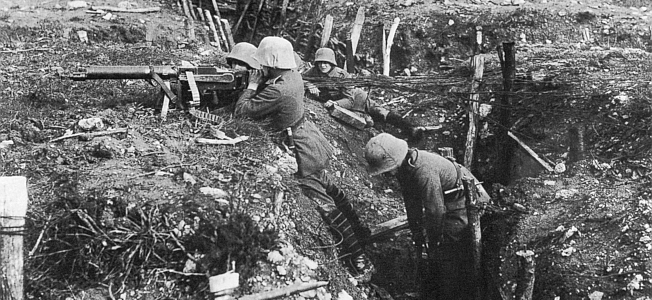
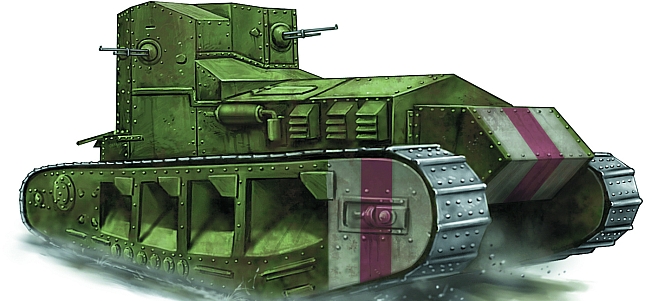
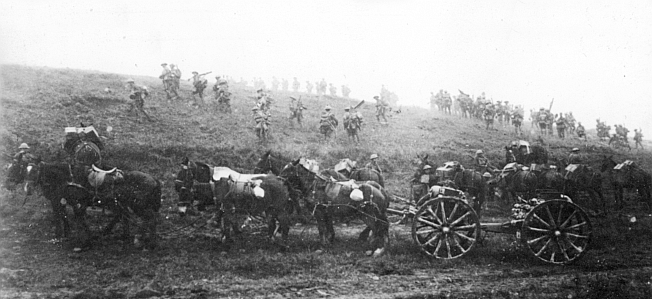
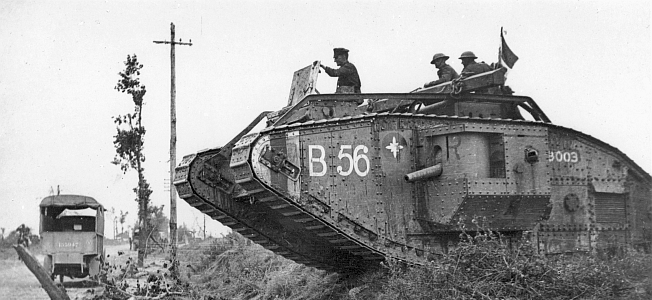
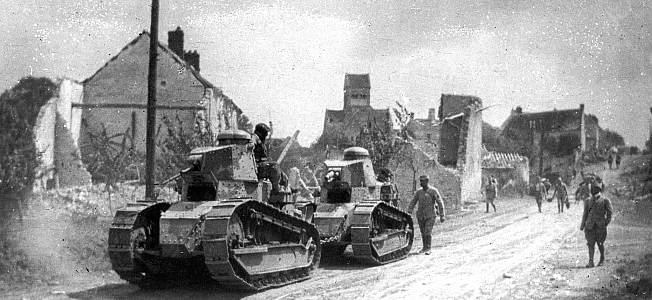
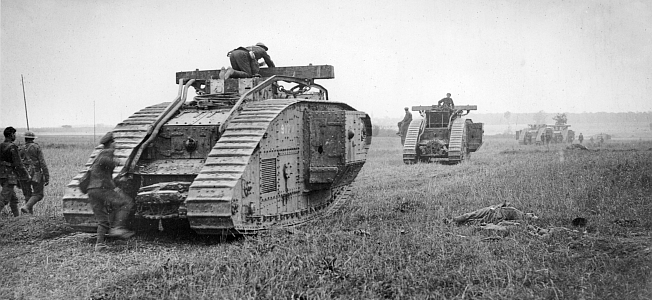
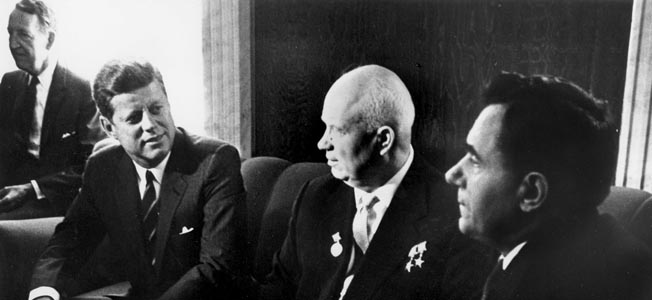
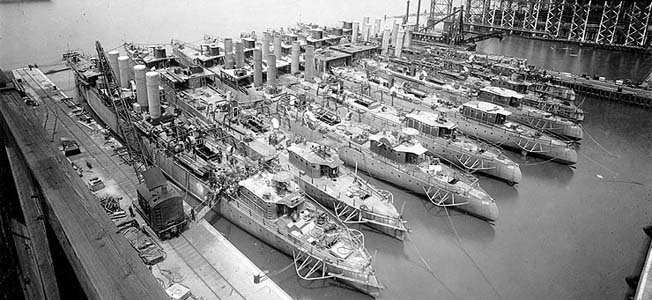
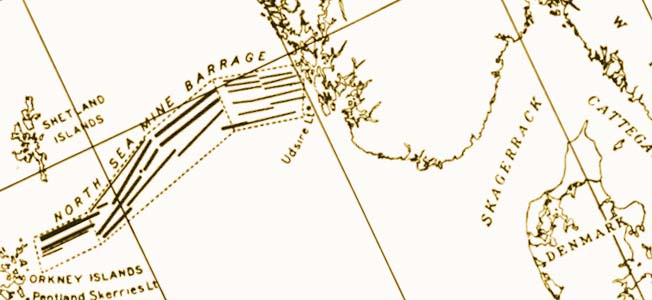
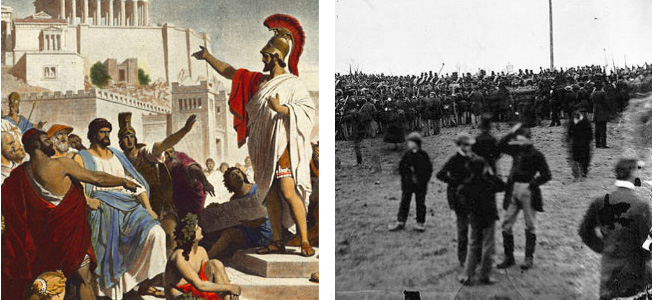
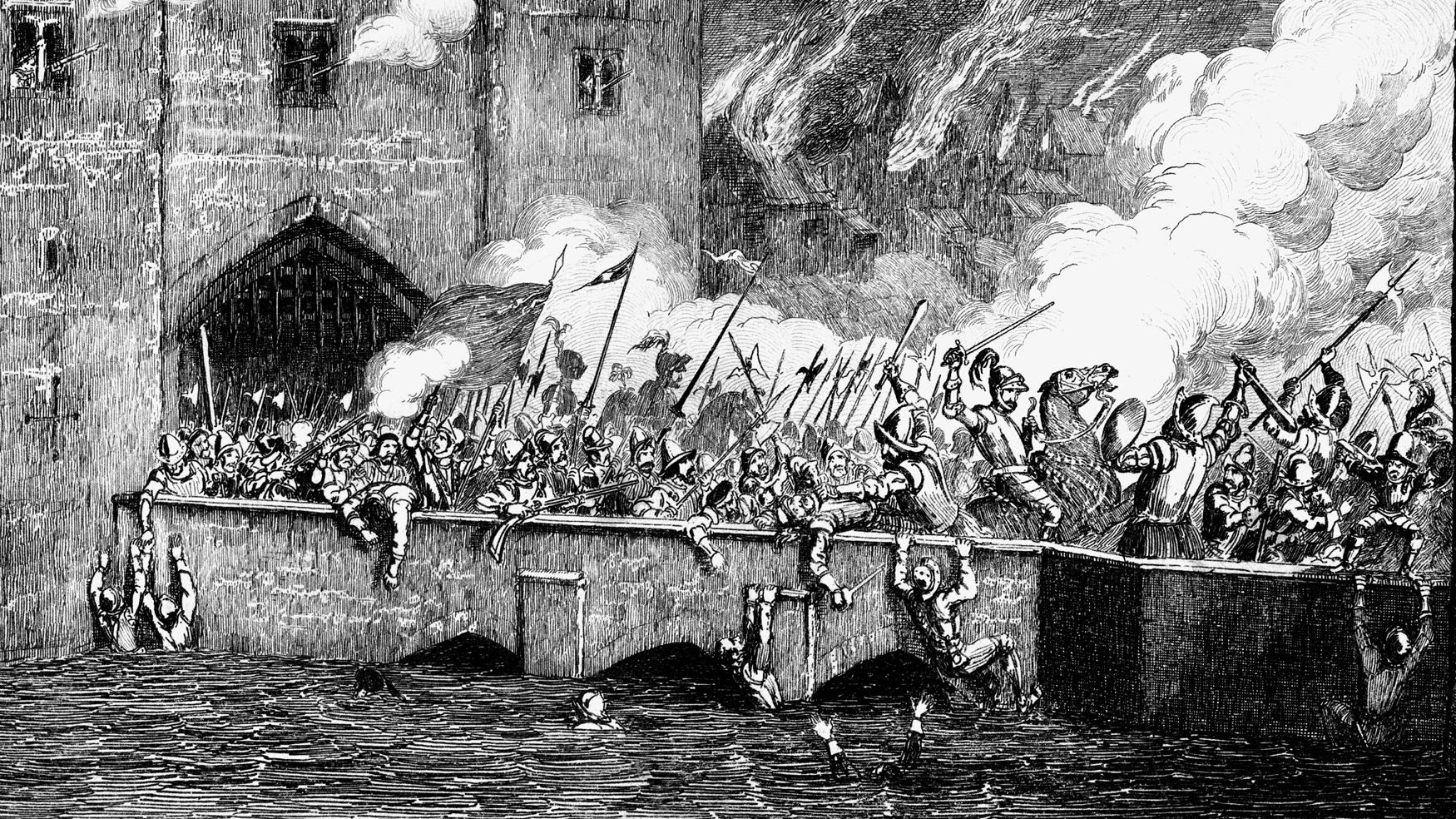
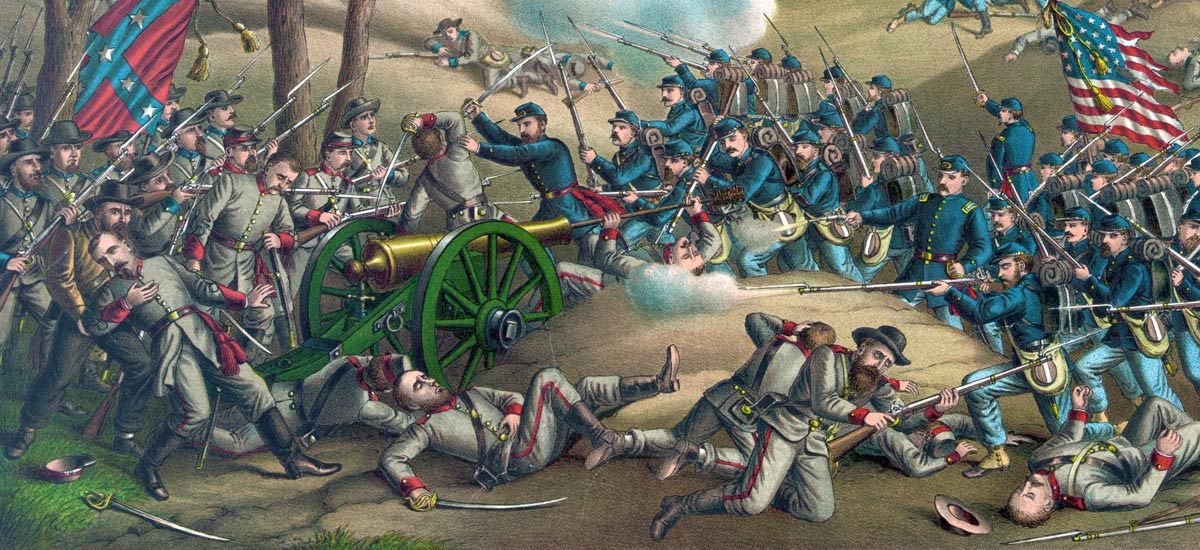

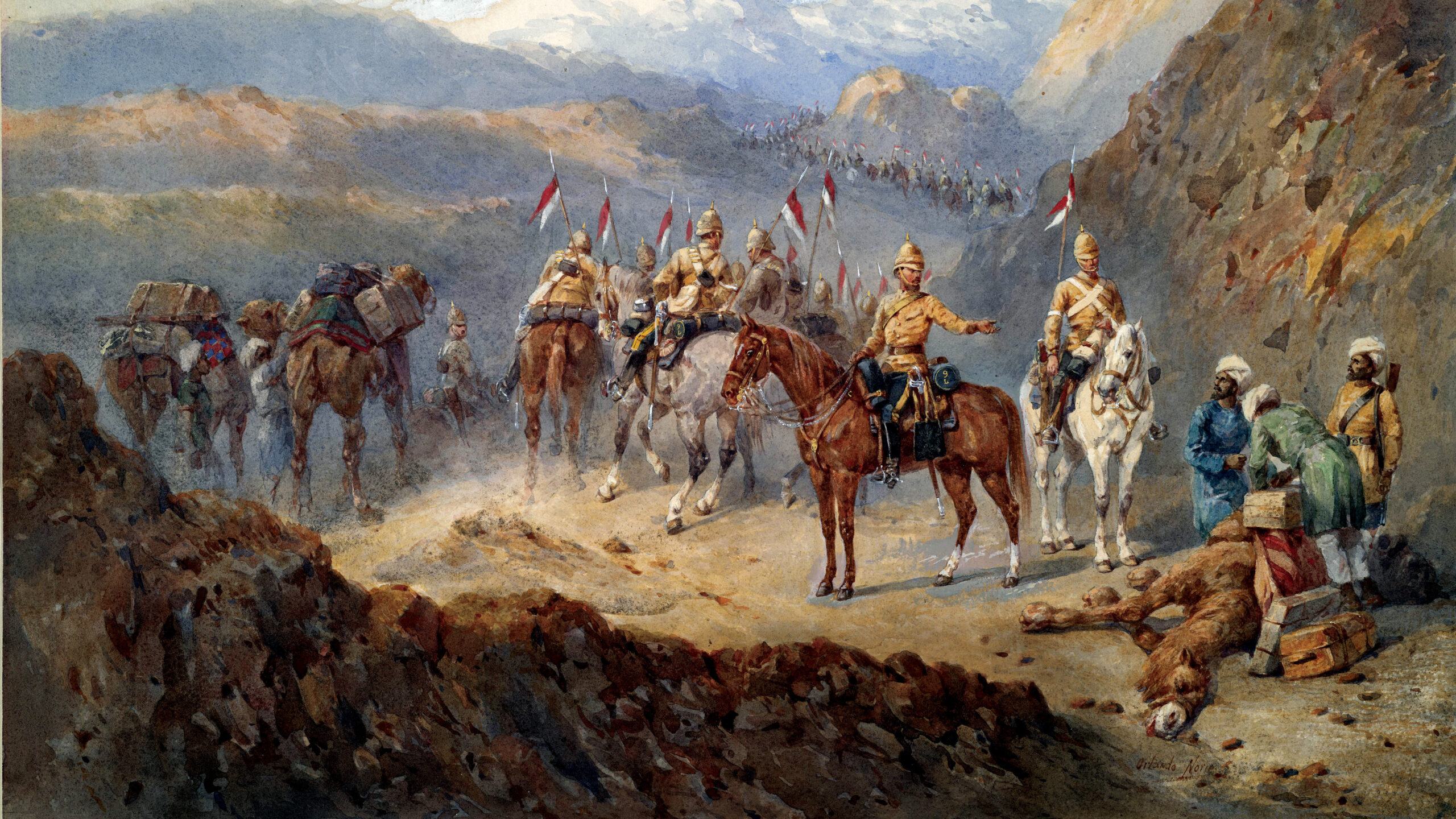
Join The Conversation
Comments
View All Comments